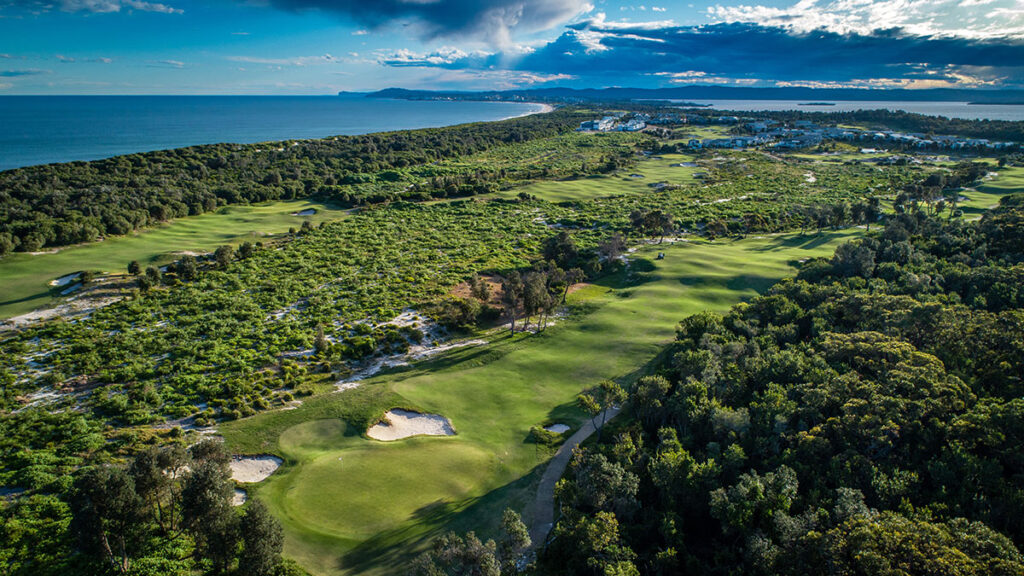Plan your golf travels for the new year based on our advice about where to play and when during the next 12 months.
Australian golfers are blessed with a wide variety of places to play and a mostly agreeable climate. You can always find good courses in whatever weather at any time of year. Yet while entirely possible, it probably doesn’t make sense to tour Tasmania in July or Tropical North Queensland in January. Both are desirable destinations, they’re just better experienced at the optimum time of year.
And ‘optimum’ can mean several things. It might be weather-related or perhaps to do with other events taking place. With that in mind, we’ve compiled a calendar to cover your golf travel in 2024. If you’re lucky enough to take 12 golf trips this year, consider your plans sorted (and we very much envy you!). But even if you’ve only got one or two trips in mind, this list will still give you options to choose from whenever you’re looking to take a break.
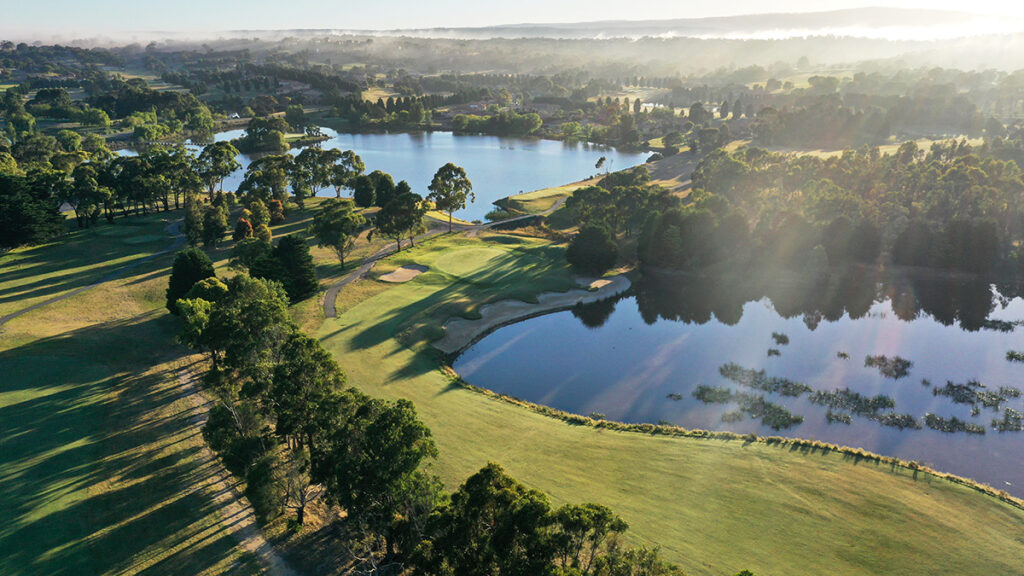
January: Melbourne
Granted, Melbourne in mid-summer can be excruciatingly hot. However, Melbourne’s vibrancy is at its peak in the first month of the year. The Australian Open tennis is on, the city is buzzing and the overall appeal of the place is palpably elevated in comparison to the winter months. We just recommend either sunrise tee-times or twilight rounds on those scorching hot days.
The best golf options are obvious – Sandbelt, Sandbelt, Sandbelt – so there’s no need to ‘sell’ that to you. In January, though, those courses are likely to be busy, so perhaps favour one of the city’s many other fine layouts or maybe a course you haven’t played before. One such option, a pleasant drive past the city’s northern suburbs, is Hidden Valley Resort.
It’s not difficult to work out how the resort got its name. The destination sits in a beautiful but sheltered little valley that doesn’t truly reveal itself until you’re in it. However, once there, the Hidden Valley Resort unfolds before you with an assortment of facilities and activities. For golfers, the Craig Parry-redesigned golf course is neat and tidy and measures a robust 6,498 metres from the back markers. The front nine is pleasant and does ease you in before the more spectacular back nine that includes Hidden Valley’s answer to ‘Amen Corner’, where holes 13-15 feature doglegs over and around large water hazards and require numerous strategic decisions to be made.
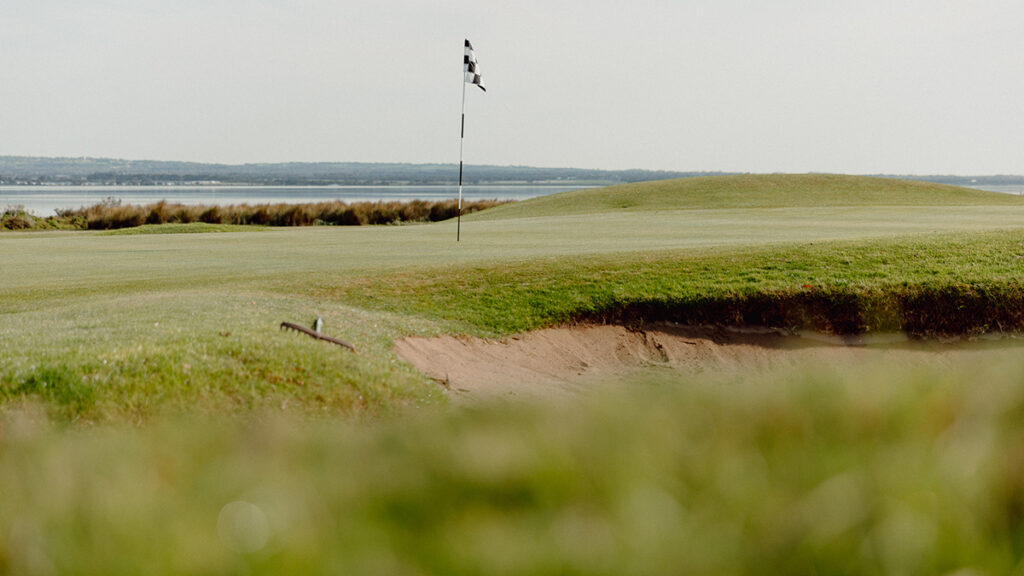
February: Victoria’s Mornington and Bellarine peninsulas
Forgive us for having a foot in both camps here, as it’s always a tough decision to make when venturing outside Melbourne with an appetite for golf. While the Mornington (think St Andrews Beach, Moonah Links, The Dunes, Bay Views) has traditionally outpunched its cross-bay peninsula, in more recent times the Bellarine (think 13th Beach, Barwon Heads, Lonsdale Links, Curlewis, Queenscliff) has improved its offerings to make it a much more even ‘match’. Plus, in February you have the Vic Open in the region, an event that might be unmatched for popularity within its immediate locale. You won’t get a game at 13th Beach that week, but you will be able to soak up the best tournament in Australia when you combine field quality, course calibre and gallery proximity to the players.
The reason we like February for the two peninsulas is because the peak holiday season has passed (both regions traditionally overflow with tourists in December and January), kids are back at school and the weather is usually ideal. A solid week of golf in either – or both – locations as the summer days slink towards autumn sounds like heaven to us.
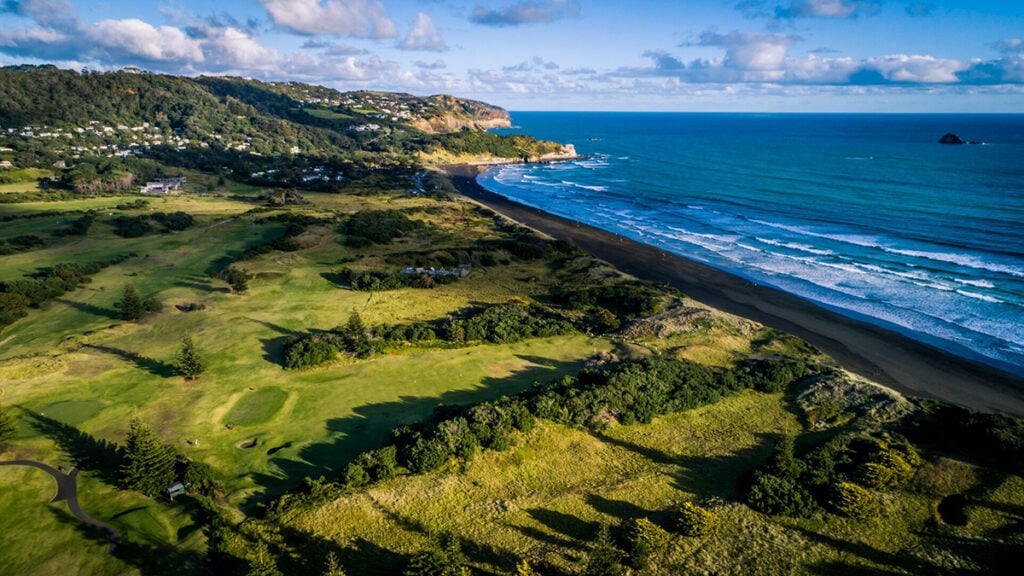
March: New Zealand
There’s a reason why the New Zealand Open is held in March or very close to it – the weather is sublime and matches the scenery, especially when it’s held in Queenstown. The action-packed town on the stunning South Island is fantastic at any time of year, but as summer merges with the cooler months, all activities are in play. Wherever you book tee-times in New Zealand’s adventure capital, consider letting Remarkable Golf Tours piece together an itinerary that works for golf and non-golf activities, while in past visits we’ve stayed at Crowne Plaza Queenstown and Glebe Apartments. Either works brilliantly as a base to see the area and play golf in Queenstown and Arrowtown. Another recommendation: add a day or two to visit Christchurch and play golf at Clearwater Resort, another striking past New Zealand Open venue.
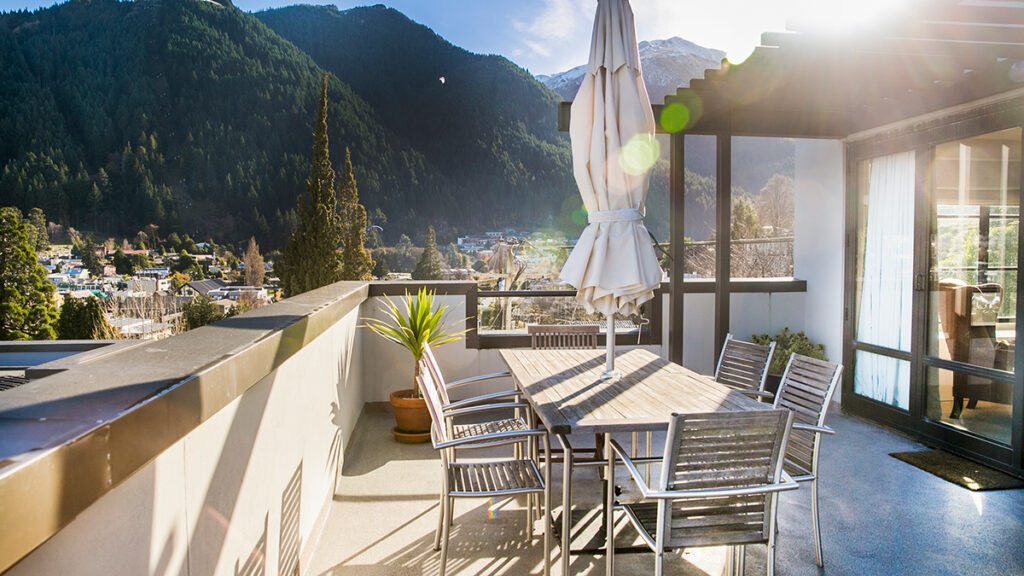
On the North Island, the start of autumn sees the likes of Titirangi and Muriwai in an array of colour and agreeable weather. The Titirangi course is a wonderful parkland excursion now faithfully restored to Dr Alister MacKenzie’s original sketches and just 15 minutes from the Auckland CBD. Meanwhile, the undulating terrain, mix of sand dunes, wind-whipped bush and visual splendour of the tumbling waves in the background at coastal Muriwai are matched by superb playing surfaces. North, South or both islands, New Zealand shines at this time of year.
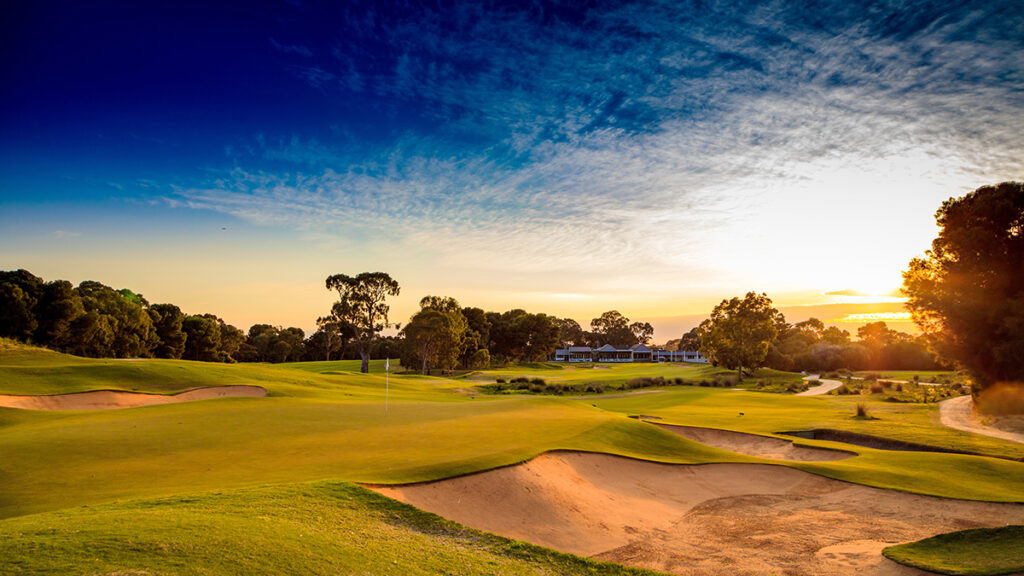
April: Adelaide
There are two sets of golfers in Australia: those who attended LIV Golf’s Adelaide extravaganza last year and those who regret missing out. If you’re part of the first group, we don’t need to ‘sell’ the notion of being in the South Australian capital this April. It might have been the greatest sporting month in the city’s history – Easter, the AFL’s inaugural ‘Gather’ Round and LIV Golf filled three consecutive weekends in ideal mid-autumn weather.
This April, the calendar is not proving quite as kind. Easter is mostly in March and the Gather Round is separated from LIV’s return by three weeks, but the wildest golf tournament in Australian history is retaining its late April date – this time falling directly after Anzac Day. If you haven’t already booked flights and accommodation, fuel up the car and find a distant relative who lives in Adelaide with a spare room or a couch on which to crash for the week, because hotel rooms will be scarce.
And pack your clubs because there’s some fantastic autumn golf to be played. When friends have asked, I’ve been recommending organising tee-times at some of Adelaide’s good suburban clubs if the likes of Royal Adelaide, Kooyonga and Glenelg are out of reach or charging inflated green fees. Mt Osmond, Blackwood plus Links Lady Bay and Tanunda Pines are well worth exploring during your LIV visit.
May: Sydney
Selecting the best time of year for golf in Sydney is not as easy as you might think. There is some temptation to say September – after all, the 2000 Olympics were held in the second half of the ninth month for a reason – as it’s often the driest time of the year. However, Sydneysiders know spring is traditionally very windy, so we’ve instead opted for May. It’s a sneaky-good month in that you can often still feel a little warmth while walking the fairways, as it’s usually June before winter truly takes hold, and many couch-grass courses are yet to experience dormancy, meaning the playing surfaces are often stellar.
Much like Melbourne, the Harbour City offers vast geographical options for golfers, however it might be the courses you’re less familiar with that pique your attention. Fitting in that mould is Lakeside Camden. Originally designed by Peter Thomson, Mike Wolveridge and Ross Perrett in 1993 and then known as Camden Lakeside, it later absorbed members from neighbouring Camden Valley Golf Resort (née Rugby League Country Club) when its 27 holes were sold for property development. Course architect James Wilcher reconfigured the layout, as the new Lakeside features fast-running couch fairways that add a ‘linksy’ feel. Wilcher replaced the original flat putting surfaces with new creeping bentgrass greens while retaining the trademark pot-style bunkers synonymous with five-time Open champion Thomson.
June: Western Australia
It took until my fifth visit to WA before seeing it in winter, but now my last two visits have come during the cooler months. It is an underrated time of year to play golf in the west. Daylight hours might be short, but the cool (rather than cold) temperatures make Perth more pleasant mid-year. Whether you play public-access gems like Joondalup and The Vines or use reciprocal playing rights to get your way onto the likes of Lake Karrinyup, Cottesloe or the Western Australian, you’re sure to piece together a hit-list of great golf. Plus there’s the Swan Valley, Fremantle and Rottnest Island to fill in the non-golf days, as well as the Margaret River region for those with a little extra time to roam.
Another great reason to bring your golf clubs to WA is the stretch of courses south of Perth. Dotted along the next 90 or so kilometres of coastline are enough top-quality golf courses to comprise a golf destination in its own right. The pick of them – Links Kennedy Bay – is temporarily down to nine holes while it undergoes an extensive redesign that will be enticing to see once complete, while courses like The Cut, Meadow Springs and Secret Harbour offer diversity, challenge and interesting golf.

July: North Queensland
Anyone who has sweltered through a summer north of the Tropic of Capricorn will attest to the suffocating humidity and uncomfortable weather that can permeate your soul in the warmer months. So it’s no secret to suggest that the middle of the year is the best time to venture up and experience our most northern latitudes. What you might not know, however, is that the interior part of the Sunshine State is gaining a following and offers just as exotic a destination as the coast.
Part of the appeal stems from the Outback Queensland Masters (OQM), the five-year-old tournament spread across six weekends and six locations that’s gained more traction with each staging. Coined ‘a golf adventure of a different kind’, the OQM is Australia’s most remote golf tournament. This year’s event will take players from the edge of the Simpson Desert, teeing off at Birdville Dunes Golf Club on June 15, onto Boulia Golf Club in the land of the Min Min light, through dinosaur country in Winton and onto Barcaldine, Charleville and culminating on the red sand greens of Quilpie on July 21. One of the most enticing aspects of the OQM is the prospect of a lucrative ace. The first five locations each have a $10,000 hole-in-one opportunity, before players line up to take a shot at the $1 million hole-in-one finale.
Mt Isa Golf Club – a past OQM host venue – isn’t on the 2024 schedule but is well worth adding for its rugged beauty and a rarity in this part of Queensland: the course is the only one in the state’s north-west with grass greens. The 18-hole layout uses its barren environment to full effect, leading Mt Isa to be dubbed a friendly club in a region full of unfriendly landscapes.
August: South-East Queensland
It’s the same state but vastly different from the northern half. I remember the first time I toured some of the Gold Coast’s best resort courses in August. The weather was sunny and dry, with temperatures in the low to mid-20s and the courses in top condition. I recall thinking that you would not want it to be even one degree warmer than it was. Another reason to like South-East Queensland in the final month of, ahem, ‘winter’ is the crescendo of our football seasons. Both the AFL and NRL are approaching their respective finals series in August, meaning there is likely to be at least a few pivotal games taking place in Brisbane or ‘the Goldie’ across the two codes, giving you an obvious choice for night-time activities.
As with Melbourne and Sydney, though, we like the idea of finding an unheralded course that’s a little distance from the limelight. Kooralbyn Valley is known to many golfers familiar with the Gold Coast golf scene. Unfortunately, what’s also well known is how the Kooralbyn course spiralled into a state of decline some years ago. These days, however, it is back to its best and should be played if you haven’t been there for a while. Tour the resort layouts by all means; just don’t leave Kooralbyn off your itinerary.
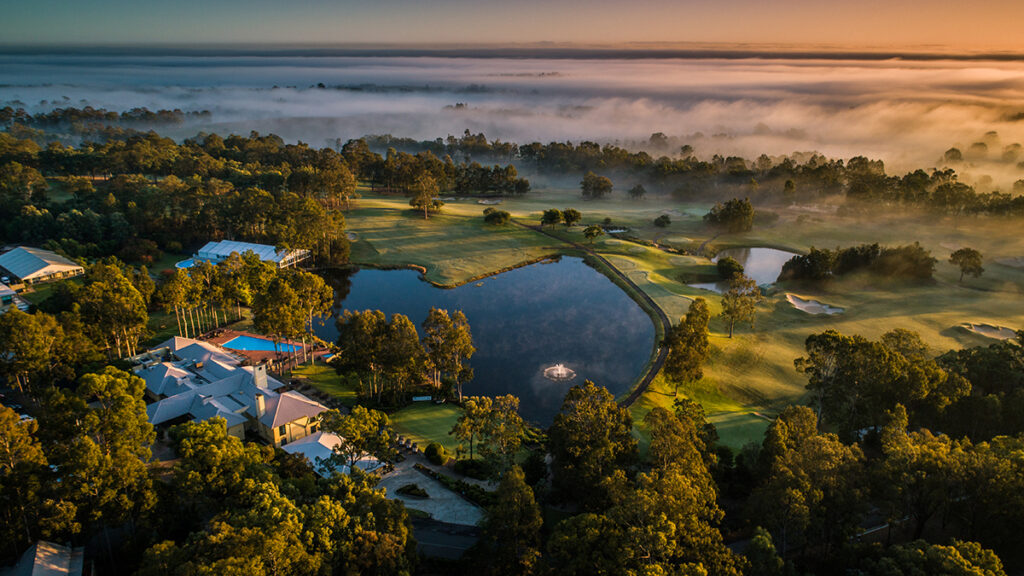
September: NSW Hunter Valley
Here’s another location that could claim to fit into several months, but we’ve chosen the start of spring. Why? Budburst on the vines, warmer daytime temperatures amid nights still cool enough to justify cracking open a bottle of shiraz in front of an open fire, and golf courses becoming ever more verdant after emerging from the frostiest time of year. Many of the wineries in the region pledge that early spring is the best time of year to visit the area, and we’re not going to argue.
Whether you stick to the tried-and-tested valley courses of The Vintage and Cypress Lakes or venture closer to the coast for Pacific Dunes or Newcastle, the Hunter Valley is on song in spring.
Bonus tip: Your correspondent lived in various parts of the Hunter Valley for about seven years in the 1990s and still returns there regularly. There is a sneaky high number of good country courses up and down the valley. Muswellbrook Golf Club – about an hour from the heart of wine country, but also close to several of the best wineries in the Upper Hunter – is as good an 18-hole layout for a town of 12,000 people as you’ll find. But don’t forget that the Hunter region stretches north to Taree and includes most of Lake Macquarie to the south, too, which puts coastal gems like Belmont and the ever-improving Hawks Nest in the picture. The Hunter is like three golf destinations in one.
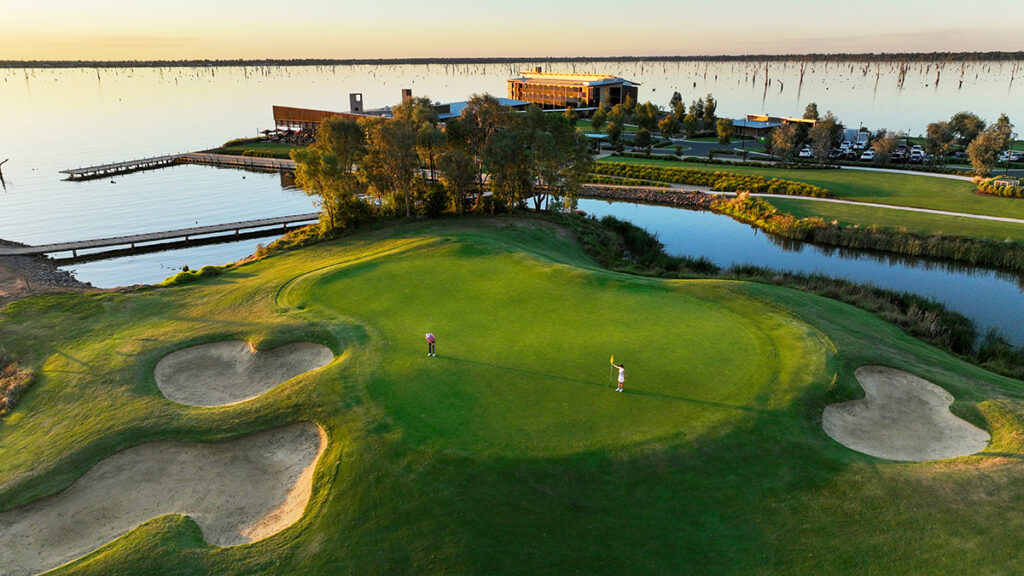
October: Murray River
The shoulder seasons are best on the Murray River, but you might just need a whole month to see all the best courses along the vast watercourse. Indeed, if you were to cover each one from the Mildura courses in the west to the Albury layouts in the east, it could take nearly all 31 days when accounting for travel between each ‘pocket’.
Yes, the Murray’s courses grew in pockets along the river including – heading from east to west – Albury and surrounds, the Yarrawonga area, the cluster closest to Melbourne at Echuca-Moama and the Swan Hill/Mildura area before the golf continues across the border into South Australia. There is a certain design style to the Murray courses. Like the river itself, almost everything about them is big: big greens, sprawling bunkers, towering trees and plenty of broad fairways, although subtle variations are evident as you traverse the region.
The Black Bull course and nearby 45-hole complex at Yarrawonga Mulwala offer convenient central locations from which you can ‘attack’ the river courses in both directions, while also placing 63 holes nearby. Black Bull is the top-ranked course along the river and is part of an ever-growing precinct that includes a thriving residential estate and a luxurious Sebel resort.

November: Tasmania
The much-vaunted Seven Mile Beach course on the edge of Hobart is due to open in November 2024, making this the perfect month to venture across Bass Strait. While the penultimate month of the year can serve up cold or warmth (golf in a jumper is still a distinct possibility), it is unlikely to be unbearably chilly and touring Tasmania in late spring is always stunning. The days are getting longer and warmer, and the feeling of being on the doorstep of summer is infectious.
Also catching is the notion that our island state is home to the best publicly accessible golf courses. Barnbougle Dunes, Lost Farm and Bougle Run in the north, Cape Wickham and Ocean Dunes on King Island and Royal Hobart in the state’s capital all rank in our Top 100 Courses – four of those first five in the top 15. And you can play them all. Yet what’s really lighting up Tasmania is the prospect of Seven Mile Beach opening, then the nearby Arm End course hopefully soon after, plus Five Mile Beach in the not-too-distant future. The golf pendulum in Tassie swung noticeably north 20 years ago with the advent of Barnbougle but now it’s set to swing south once more, making the entire island a captivating proposition for a week’s golf.
December: Home
Christmas is looming and chances are you’re planning a return to your home town or region to visit family, so why not use that time to get back in touch with your roots and return to the place where you probably started playing the game? Can you beat your previous best score around your home track? Are you a better golfer now than when the year began? The solutions to many things in life and in golf begin with a return to the start.

